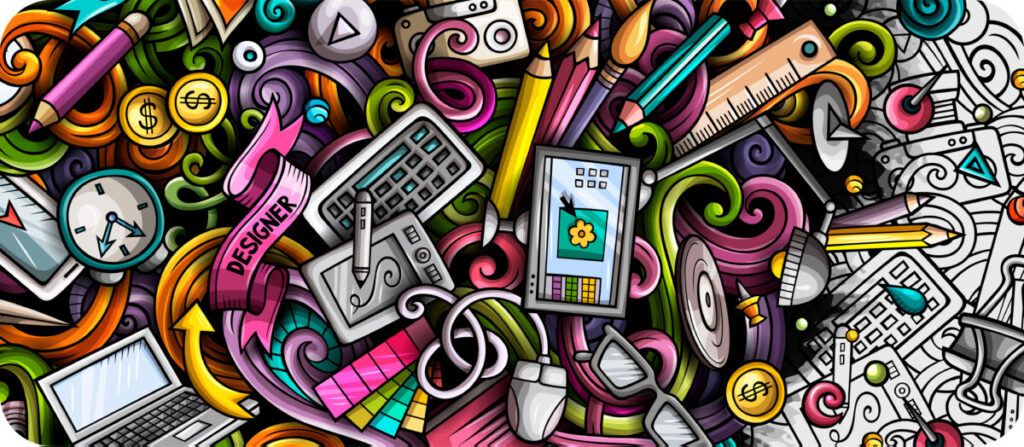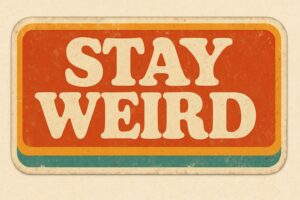
“I don’t think you would find a creative person who would say they’ve had a sh*t lockdown because your world tends to be inside your brain anyway” – Noel Gallagher
Welcome to the first RocknRollCocktail.com newsletter. I’m going to dive right in with a topic that’s a bit polarising, but nonetheless near and dear. I’m a bit torn on the topic of creativity during lockdown. On one hand, I realize that my beloved entertainment business has suffered a deathly blow with the closure of venues and the cancellation of tours, but on the other hand, there are some who say that their creativity has soared. Famed singer-songwriter Noel Gallagher claims that he began writing songs with others, something that he’s never done before. Starsailor frontman James Walsh said during a recent socially distanced live gig here in London that he completed an EP and a new album during lockdown that he’s particularly proud of.
But many creatives within the marketing and advertising space experienced the opposite effect. In fact, there have been several reports that marketing creatives have felt a loss of creativity with some going so far as seeking help from a psychologist. Although others, myself included, felt a creative awakening through live streaming, writing books, and other creative projects.
Do we think or act creatively to the same extent as prior to pandemics?
Does the combination of uncertainty and danger caused by pandemics make us more or less creative? In other words, can the situation caused by COVID-19 motivate and drive individuals to produce something creative?
A recent study examined data collected from students’ daily diaries from similar periods in 2019 and 2020 to see if lockdown hindered their creativity. Prior to the study, scholars suggested students would have an increase in negative emotions, anxiety, and lack of creativity but the actual outcome was more complex. The students experienced the opposite with confinement and had more opportunities for creative behaviours. Although, what is intriguing is students did feel less positive at times but no overall changes in anxiety or negative emotions from the previous year.
Have you heard of the “Gain Paradox Principle”? Basically, when someone is in stressful circumstances with a potential of loss, they are more inclined to fully invest their time in other resources like developing their creativity.
You could say Sir Isaac Newton thrived with the “Gain Paradox Principle” during his time in lockdown, which was later referred to as his annus mirabilis, the “year of wonders.”
During the enforced isolation caused by the outbreak of the Great Plague of London, Newton created major new insights for his theories of gravity and optics. Some would say these insights are his best attributions to science.
Yet anecdotes aside, what are the effects of the pandemic on cognitive processes relevant to creativity and everyday creative behavior?
Which takes us to another aspect to consider. Does it depend on the personality traits such as introvert or extrovert in order to let their creativity grow?
I looked into this aspect a lot as the blanket perception is that extroverts would suffer as they need to feed off other people.
I dug deep to find answers if this perception was true. Again, the answer was surprising.
Maryann Wei from the School of Psychology, the University of Wollongong in Australia, completed an empirical investigation on the association between introversion and the psychological impact of COVID19 related circumstantial changes. The study measured a range of demographic factors from 114 individuals (extroverts and introverts) and asked them to record their rating on loneliness, anxiety, depression, and cognitive impairments.
Surprisingly, introverts experienced higher levels of loneliness, anxiety, and depression but with no cognitive impairments.
“Cognitive impairments experienced as a function of social distancing and lockdown measures were not moderated by introversion, suggesting that cognitive function and activity remains intact across the introversion-extraversion dimension through COVID19-related circumstantial changes.”
Rather than asking for help, Wei found introverts who had signs of anxiety or depression would try and deal with it themselves. Dealing with negative running thoughts that come with anxiety or depression is not easy to stop yourself and can make the situation worse.
Does isolation and a lack of stimulus kill creativity? For some, solitude fuels creative thinking.
For every individual who feels stuck in a creative rut during lockdown, there are others who are producing more work than ever.
So, what can we do to battle creative fatigue or lack of inspiration?
Journaling
Journaling is a powerful tool that can help create new inner experiences. Journaling is one aspect many people are now using as part of their mindfulness routine along with meditation.
Journaling allows your creativity to develop while giving you a platform where you can be completely honest, self-reflective, and express your inner emotions and thoughts.
Wellman psychology suggests, “The key act in sustaining self-reflection is journaling as it allows you to reap the benefits by transforming inner awareness into goal-directed action.”
The pure act of journaling by handwriting out your thoughts and ideas, actually re-wires your brain.
If you want to start reflective journaling, see Wellman Psychology and Associates.
Creative Exchange –
A creative exchange is when a group of people come together to discuss their ideas and thoughts on particular topics close to them. One of the biggest aspects of a creator exchange is to help you realise there are other like-minded people out there and you are not alone.
Many people feed off a creative exchange as it helps inspire or fine-tune your ideas. Pre-pandemic, you’d be surprised at how much creative exchange you would usually have.
If you have a group of friends you would usually converse with on your ideas, create a weekly zoom chat. If the timing doesn’t work, arrange a couple of one on ones throughout the week, even just one person will help boost your creativity.
Not only would this help creativity, but it will also be a great chance to catch up with friends and to also see how they are coping.
If you’re looking at trying something new and don’t know anyone to have a creative exchange with, Springboards for the arts created a Creative Exchange website that offers a range of media to help inspire you.
Exercise – even just a walk.
We all know exercising boosts endorphins and makes you feel good but many people don’t actually put it into practice. Not to mention, many of us don’t actually know the risks of a sedentary lifestyle (inactive lifestyle), which is detrimental to your health as it doubles the risk of obesity, diabetes and cardiovascular diseases. Plus, it increases your risk of high blood pressure, lipid disorders and colon cancer as well as the risk of mental health issues like depression and anxiety.
Sorry, not trying to scare you, but these are real statistics.
Even just heading over to your local park, taking a walk, and just getting some fresh air will do wonders for you overall. Alternatively, if it’s too hot there are a load of apps now (thanks to the pandemic) that have increased their functions and videos etc. Here’s GQ’s top 15 for 2021: HERE!






